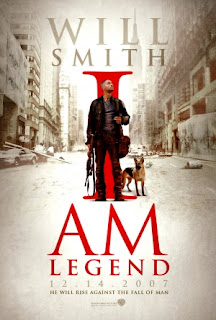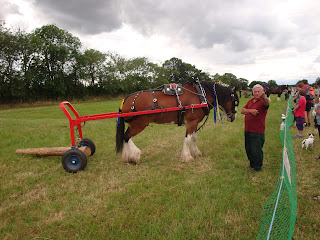One film that most people will recognize as an important film that shows a deep connection between the main character and his animal companion would be 'I am Legend' that came out in 2007.
(By the way; hundreds of spoilers for this movie before someone reads ahead!)
The film is set in a post apocalyptic setting (though don't let that fool you) where the focus of the film is the character Robert Neville (played by Will Smith) whom is a virologist and his struggles in his loneliness to find a cure for the deadly virus that has consumed the world. The second main character is that of his dog 'Sam' whom is his only companion.
The other people around him are compromised of scary animalistic 'Dark Seekers' whom consume human flesh but can not go out in the day time. As such the city is completely deserted apart from Robert and his dog whom live together and drive about the abandoned city to collect items of use from abandoned homes and to collect deer meat fro the heard thriving in central park.
The two are extremely close and share 80% of screen time. The connection between him and his loyal pet is very sweet and the two have a mutual friendship. Robert also often talks to Sam and idly has conversations with her.
One notable scene mimics the behavior of a child not eating their vegetables and Will chastises Sam for it much like a parent.
 |
| Sam does not want vegetables |
 |
| Sam an Robert in the bath on a particularly scary and noisy night. |
Sam defends Robert and in the end is bitten by the virus carrying dog. This scene is extremely emotional because of the concern we have built up for Roberts dog.
The scene then climaxes with Sams death after it is revealed Sam is in fact called Samantha and was a girl all along, unknown to the audience.
The reason this works so well and on so many people is because how we can empathize and understand these emotions. We know Robert loves his dog and so when she dies we feel bad for him. We want to help Sam and would like for her to live.
We must take this into account when focusing on our game and how much time between characters we have on screen is shared out and how well we at character to the animals. Of course part of this would be determined by the player them selves, but we can dictate how much time passes for the main horse character in general. We will enforce the need to look after the welfare of the horse and the well being of the character.
This is true for many stories where a very important character dies.
The more screen time, the more we see the character interact with others and the more we enjoy the characters time on screen (They have to be a likable character) the more upset we are when the character dies.
Being able to create an emotional connection between people an animals can be tricky, but has been achieved extremely often within animated films of animals (where the animal takes on a bigger role of course). But this is not always the limit and many films can still achieve a level of emotional importance without anthropomorphizing the animal.
I read this book when I was a little kid and that scene always struck a cord with me. And I fared no better
when watching the film when I was older. We feel awful for ginger because we have seen her grow up with black beauty and seen the hardships they have gone through together. We can see her as a emotional and feeling entity and not as some mindless creature that just eats, sleeps and mates with things as animals are seen to do withing documentaries.
We see black beauty and free and happy, frolicking as we can expect to see horses. But then again we see them in more dangerous and scary scenes.
And then toward the end we see the harshest part of their life, struggling to pull loads for years. This on screen suffering and grief causes intense turmoil within the audience.
This sort of empathy is used commonly within the rspca pleas; seeing animals in the rain or abandoned or hurt makes people feel awful for the sake of the animal (enough to give money to help prevent this sort of abuse)
This sort of effective imagery and acting can easily be given to our horses and especially our main horse role. When we see the animal then finally having a happy ending or at least having a moment of more enjoyment; our audience will be pleased as well.
































